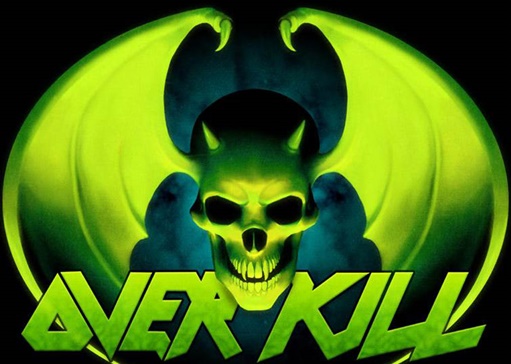September 30, 1997 brought the release of Overkill's 9th studio album, From the Underground and Below. The effort was a continuation of the sound developed on The Killing Kind, with the addition of some industrial elements on songs such as "Save Me." Overkill frontman Bobby Blitz has often said that this album is one of his favorites, and the single "Long Time Dyin" has become one of his favorite tracks to perform in concert. A video was produced for the single, though MTV's interest in thrash bands had deteriorated so much at that point that it's not certain the video was ever played on the network. The repeated snubs from MTV prompted the band to reconsider wasting time with music videos, and they wouldn't produce another for a decade. As with its predecessor, From the Underground... failed to chart on the Billboard 200, but peaked at No. 34 on the Heatseekers chart. The album was also well received in Germany, where it peaked at No. 80. Again, the band decided to forgo a lengthy US tour in favor of more dates in Europe, where they toured extensively with support from Nevermore and Angel Dust.
In the fall of 1998, Overkill had the first of a series of health scares when Bobby Blitz was diagnosed with an aggressive form of nose cancer. The diagnosis was made early, however, and the singer underwent surgery and has been in remission ever since. Following his recovery, the band hit the studio again to begin working on album number 10, recorded in November and December of '98 at Carriage House in Stamford. Released on February 23, 1999, Necroshine followed the pattern established by the two previous Overkill releases, failing to hit the big chart in the US but reaching No. 37 on the Heatseekers chart. Once again, the set sold well in Germany, reaching No. 82 on that country's chart. Necroshine marked a significant milestone for Overkill, making them the first thrash band to release ten studio albums. Other early thrash acts such as Sodom, Kreator, Anthrax and Slayer wouldn't achieve that feat for several more years, while Metallica and Exodus still haven't notched ten full-lengths as of the summer of 2014. (Exodus is scheduled to release their 10th effort in October, 2014).
With 10 studio albums in the books, Overkill turned its attention to compiling a covers album to pay tribute to the bands that influenced them, including Motorhead, Black Sabbath, KISS, Judas Priest and The Ramones. Some of the songs had already been recorded and released as bonus tracks or on other albums, while the rest were recorded that summer. Entitled Coverkill, the covers set hit stores in October of '99, garnering only mild interest from fans and critics. The band set out on a European tour again , this time from Canadian thrash legends Annihilator. During the tour, Annihilator grew weary of the unprofessional behavior of their frontman Randy Rampage, and offered Overkill guitarist Joe Comeau the role. Comeau accepted, ending his stint in Overkill. The decision was made to move forward as a four-piece, so Comeau was not replaced. Overkill's only guitarist for the remainder of the tour was Dave Linsk, who had replaced Sebastian Marino when he left just prior to the tour.
Now a four-piece, Overkill entered the studio again in June 2000, spending about two months laying down their tenth full-length record. Titled Bloodletting, the album was issued on October 24, 2000 on Metal-Is records, their only release on the small indie label. A throwback to Overkill's earlier days, the album was a classic thrash record, void of the industrial and Nu Metal elements the band experimented with on the 3 albums that came before it. Critics and longtime fans of the band relish Bloodletting, but sales were dismal, and the set failed to chart anywhere, selling fewer than 2,500 copies in the US in its first week after release. Undeterred, the band set its sights on another European tour, this one a supporting tour for one of Ellsworth's heroes, Judas Priest frontman Rob Halford. The legendary singer was touring in support of the debut effort of his second solo project, aptly named Halford. During the tour, DD Verni was forced to take a leave of absence when his wife gave birth to their second child, prompting the band to hire a fill-in in Derek "The Skull" Tailer, formerly of Twisted Sister frontman Dee Snider's S.M.F. band. The band enjoyed working with Tailer, later asking him to fill the second guitarist slot in the band.
|
|



